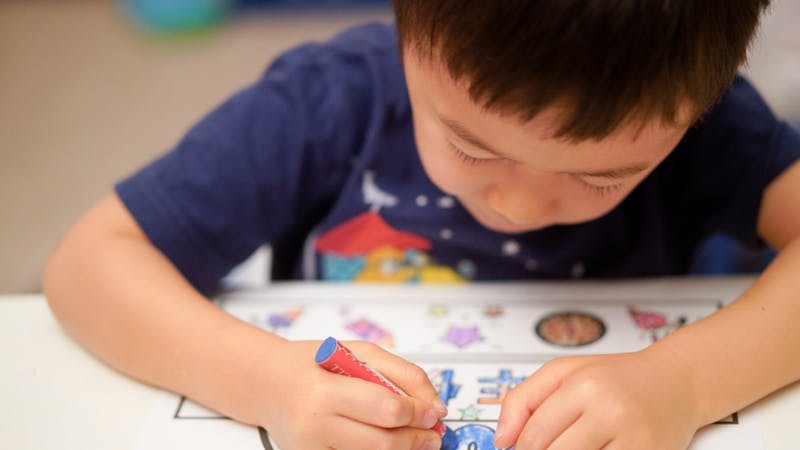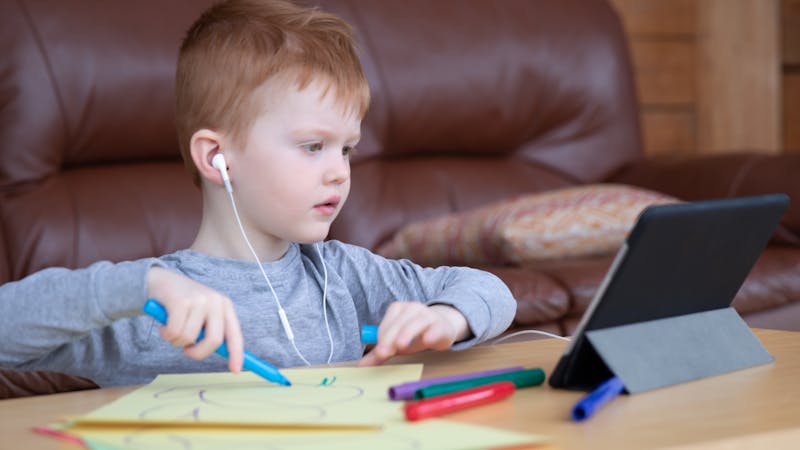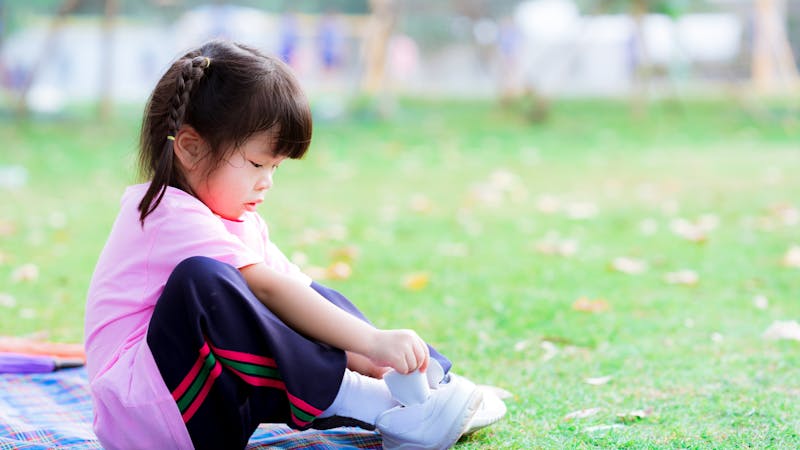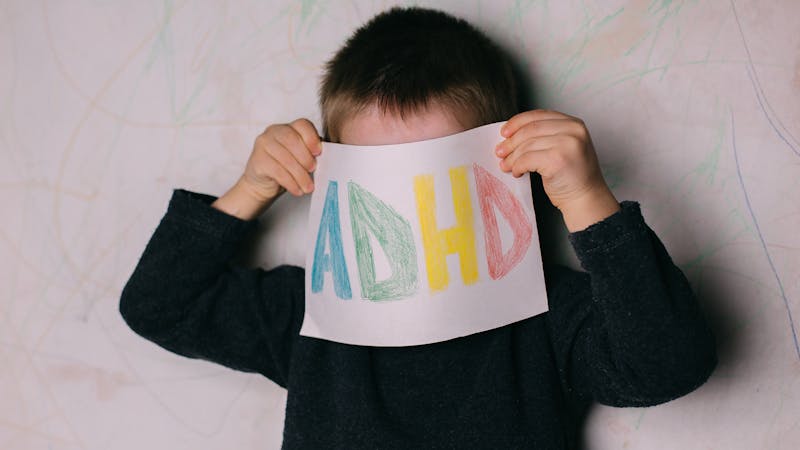19 Activities & Apps to Help Kids With ADHD Blossom Apps, games, and online activities to help kids with ADHD learn to manage focus and thrive.

ADHD is often misunderstood and misdiagnosed. Attention Deficit Hyperactivity Disorder affects people differently, but children with ADHD may have trouble paying attention, controlling impulsivity, or overactivity, causing forgetfulness, disorganization, or anxiety. For children with Attention Deficit Hyperactivity Disorder, formerly ADD, and other neurodivergent conditions, healthy doses of ADHD-friendly technology, activities, and resources could help ease symptoms of ADHD in children, helping kids manage their energy and time and improve self-regulation skills. Here is a list of ADHD apps and resources for kids that could help kids with ADHD blossom in school, at home, and beyond.
Using Apps & Online Resources Responsibly
Technology is everywhere, and as it grows, so does kids' access. Children with ADHD can harness the benefits of technology to thrive, but it's also important to watch how time on certain apps or games affects kids with ADHD and to monitor it. Most of us know what getting sucked into the screen is like. Still, for children with ADHD, this pull can be much stronger as shorter attention spans, enticing interfaces, and flashy sounds can be thrilling, sending instant gratification to the brain's reward center, which in the long term can aggravate their ADHD symptoms- exactly the opposite of what we want to do!
That's not to say that technology can't be used to help manage ADHD symptoms in kids. However, as parents or guardians, limiting screen time or having boundaries around using technology at bedtime could help them settle. You may consider exploring if your child's device has parental controls or if your child is old enough to understand why rules around using technology are beneficial and necessary; you might think about coming up with screen time rules together. For kids who have their own phones, try an app blocker like Net Nanny. This is an all-in-one parental control program that blocks apps and websites you don't want kids to access, allows you to set limits on screen time, and can monitor your family's digital habits.
With that in mind, here's a list of apps, games, and resources that could help children with ADHD boost focus, foster self-regulation skills, improve reading and math skills, and more.
Apps to Help Kids With ADHD Focus
One of the main symptoms of ADHD is a dysregulated attention system, sometimes leading to hyperfocus and, at other times, zero interest in a less engaging activity. These interactive apps can help harness the superpower of hyperfocus while making everyday activities more engaging for kids with ADHD.
GoNoodle
Channeling energy can be difficult for kids with ADHD; GoNoodle's videos for elementary school kids focus on getting up and moving and mindfulness. Their videos are free on Youtube and Spotify, and you can download the GoNoodle app.
https://www.gonoodle.com/Sesame Street
Sesame Street's Breathe, Think, Do series helps kids regulate and process their emotions through meditation techniques, teaches about physical cues for negative emotions, solution-based assessments, and learning to break down problems in a child-appropriate approach.
https://apps.apple.com/us/app/breathe-think-do-with-sesame/id721853597Goally
Goally is a skill-building tablet or app designed for kids, loved by many parents and neurodivergent experts, OTs, and Speech Therapists. Goally makes it easy to set up routines, behaviors, and no-stress awards, and their software can be purchased and used on any mobile phone/tablet or through their distraction-free device.
https://getgoally.com/Headspace
Meditation is not just for adults; in fact, Headspace is on a social mission to introduce meditative techniques to children at an earlier age so that they can reap the benefits of learning to understand, process, and communicate their feelings more kindly, earlier.
https://www.headspace.com/meditation/kidsFinch
Self-care can be difficult for individuals with ADHD, especially as they grow older. Building good self-care habits in kids from an earlier age can help them to refocus, avoid burnout (for parents, too), and process their emotions. Finch is a furry friend who refocuses your daily self-care into caring for someone else; it's the Tamagotchi of self-care. Age 4+.
https://finchcare.com/Brain Buster Games & Cards
Do your kids need some boredom-busters? Your child may need a little redirection to focus their energy on something tactile or that engages their problem-solving skills. See if any of these brain-busting activities could work. When engaging in these boredom busters between activities, you could try the Pomodoro technique, endorsed by many ADHD experts, to refocus and work on productivity management.
Harness the power of technology-free learning in downtime, and see if any of these ADHD-friendly, sensory-rich offline learning games work for your family.
Card Games
Keep hands busy with a simple deck of cards. There are a ton of fun games you can play, like UNO, which has highly visual clues for kids struggling with attention. Remember though, not all kids with ADHD will enjoy playing these types of games, especially if the rules are over complicated and pressured. If you want to learn more about game accessibility and accessible board games, head to Meeple.
Play Word Games
Word games for family fun, like Scrabble, Upwords, and sight word bingo, can help kids with ADHD engage their concentration and spelling skills while having fun. To get the most out of your games, take research to a new level and discover new words with a letter solver; write it down every time you learn a new word.
Spend Time Outside
Though spending time outside in natural or "green" settings isn't going to "cure" symptoms of attention-deficit/hyperactivity disorders in kids, a 2004 study has identified that spending time on greener outdoor activities reduced ADHD symptoms significantly more than in other settings. Finding outdoor activities that work for your family is best; some ideas could be walking to the park or forest, cycling, running, hiking, or organizing outdoor treasure hunts.
Pillow Fights
Pillow fights are a great way to channel energy and hyperactivity, especially if you have a child who tends to throw things that they shouldn't. Plus, it's a free activity (choose firm pillows), pretty harmless, and it shows kids what they can and can't throw around the house.
Get Moving with Sports!
Exercise and sports release your brain's feel-good neurotransmitters, called endorphins, which for children and adults with ADHD, can complement their strategies for increasing attention and regulating mood. Here are a few ideas to try, but it's best to find out what works for your child, what they enjoy, and what your doctor suggests.
Meditation & Yoga
Similar to children on the autism spectrum, children with ADHD will often experience anxiety. Anxiety is normal, but intrusive thoughts, increased impulsivity, and negative self-talk can spiral if improperly managed. Building mental focus through yoga and meditation allows kids to see how the body and mind connect and has been shown to thicken the prefrontal cortex. You can try yoga cards or yoga dice.
Skill-based Exercise
Kids with ADHD are continuously accused of lacking self-discipline and control, but that isn't true. It's often simply a byproduct of excessive energy and struggling with executive functions, functions that help people meet goals, follow directions, and remain focused. Skill-based sports like Martial Arts and Judo could help, as the moves are repeated, short, and alight different learning methods, increasing confidence over time.
Exercise Videos
Say you need a 10-minute activity to get through a particular activity, or you've noticed that your child needs to focus on something else. Putting on a quick exercise video might help; it could be anything from dancing to a quick energizing kids' workout.
Get Crafting with Art
Art can be extremely therapeutic and soothing. Did you know that engaging in art activities can boost problem-solving and communication skills in children with ADHD? It can also help parents and guardians see where their child is and how they're feeling, as some children feel they can express themselves better through visual images and experimentation.
Scribbles
Did you know that scribbling or doodling significantly reduces stress on the nervous system? And because there's no right or wrong, kids with ADHD can scribble away for as long as they need. Check out DoodleNoteClub for some ideas.
Use Recyclable Materials
Making arts and crafts using materials you have around the house can be hugely therapeutic. Making art helps with focus, motor skills, organization, sequencing, and decision-making. Get your child to tell you what they're doing, and to make the process even more engaging, consider putting on some music in the background.
Make Shadow Puppets
This activity has a clear beginning, middle, and end, but there's zero pressure to complete it in one day. You can spread this activity out for as long as you need, but it can also be completed quickly in 15 minutes. Grab materials, make puppets, grab a bed sheet, wait until it's dark or turn off the lights, and act out your puppet show. Kids can also write the script if they want to.
Resources to Help Kids with ADHD Thrive at School
The strict boundaries of a traditional school environment can be mentally and physically taxing for children with a neurodivergent condition like ADHD, especially if there are unclear expectations and rules. Teachers and parents can, however, work together to foster a positive learning experience for children with ADHD in the classroom or at home as part of homeschooling with a few handy apps and resources. Here are a few to get you started.
Audible
Some kids struggle with reading; some children with Attention Deficit Hyperactivity Disorder may struggle more with reading and literacy skills. If your child struggles with reading passages, Audible could help. Audible is a subscription-based audiobook program that can help kids process and enjoy the contents of a book without getting as overwhelmed.
https://www.audible.com/ep/kids-audiobooksMindNod
MindNod is an interactive mind-mapping and visual brainstorming tool that helps kids connect their thoughts and clarify their ideas, which is easier to process and remember.
https://www.mindnode.com/Happy Kids Timer
Happy Kids Timer isn't strictly just for school; it can help kids and parents work together to establish routines without stress, which in the long run will help you and your child get on with all the things you have to do in the day.
https://happykidstimer.com/Learn about Micro Prompts
Micro Prompts are a game changer, but they are actually very easy to implement once you know how. Micro Prompts or gentle prompts rephrase how you remind your child to do something. So, for example, instead of saying, " put on your shoes," you could say, "we are going outside now; we need to put on our shoes," "first, we tie our laces, etc." Gentle and positive reinforcement helps, as does repetition and visual clues.
https://www.peacehealth.org/medical-topics/id/tk1723WatchMinder
WatchMinder, invented by a child psychologist and attention deficit disorders specialist, Dr. Laurence Becker, is a discrete assistive tool designed to remind users to perform specific tasks through small vibrations. It can also be used as a medication reminder.
https://watchminder.com/Resources
- Additude - Exercise and the ADHD Brain: The Neuroscience of Movement - https://www.additudemag.com/reviews/post/exercise-and-the-adhd-brain/
- Kuo, F. E., & Taylor, A. F. (2004). A potential natural treatment for attention-deficit/hyperactivity disorder: evidence from a national study. American journal of public health, 94(9), 1580–1586. https://doi.org/10.2105/ajph.94.9.1580
- CHADD - Spend Time Outside to Improve ADHD Symptoms https://chadd.org/adhd-weekly/spend-time-outside-to-improve-adhd-symptoms/

About the author
Sarah Perowne
Sarah Perowne is a language and education specialist with over 10 years of experience in teaching and content creation. She has worked with students of all ages in various teaching methods, including those with disabilities and ASD. She sports an acute knowledge and skillset in teaching English as a second/foreign language (ESL) English Language Arts and creating content for online teaching resources, articles, and podcasts.



